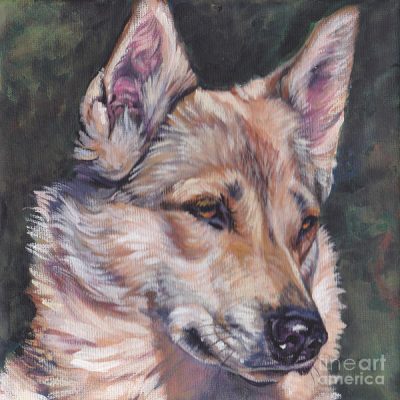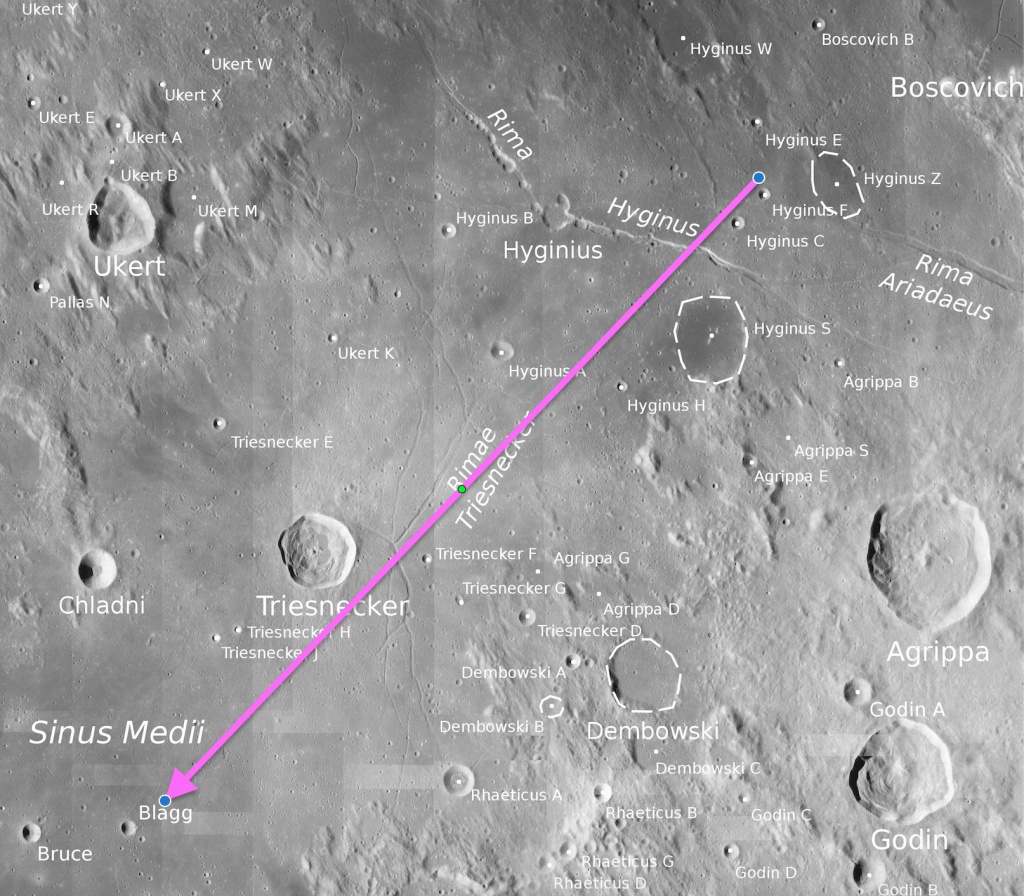
This is a post that takes a tortured – but informative – route to a dog breed you might find interesting. We start with a post title has nothing to do with gender harassment, and everything to do with a woman who achieved a lot at a time when it wasn’t easy for her gender to make inroads in science.
Check out the map below:
The arrow points to a crater on the moon named after Mary Blagg. Before Mary got an interest in astronomy in the late 19th century, it was the custom that whoever drew a map got to choose the names, and that extended to craters on the moon. Consequently, the same crater or dome could have four different names. Mary, largely self-taught and one of the first four women admitted to the Royal Astronomical Society, tracked the mismatched names and made sense of them. Her tireless work led to the creation of the International Astronomical Union’s first formal list of features published in 1935, a standard set of names for the surface and physical features on the Moon. Twelve moon craters were named after living astronauts in the 1970s. Thirty-five honor Jesuits, and fourteen are named after astronauts and cosmonauts who died as part of a space mission. The rest of the craters are named after scientists, philosophers, mathematicians and explorers, and one of them is Mary Blagg.
One can only image what Mary would have thought had she known that one day, man would walk on “her” moon. The accomplishment started with baby steps and sacrifice, namely that of a Russian dog named, “Laika,” the first animal to orbit the Earth. Tragically, Laika died of overheating within hours of launch, but “Laika,” is also a Russian word for several dog breeds similar to a husky, and one of them is the West Siberian Laika.
Unlike other Russian hunting dogs, including the East Siberian Laika, the West Siberian Laika specializes in hunting only one type of game – a sable. This ability to ignore all other game is what helped the breed survive over time because the pelt of a single silver-black sable could support a family of four for a year. When trained, the breed’s versatility and native intelligence helped it learn to hunt other animals, as well.
The breed made its way to the United States in the 1960s when Russian diplomats and officials imported a few as pets. In 1992, the first West Siberian Laika litter was born in America to “Shelma” and “Alex,” a pair owned by a Russian born, Penn State University educated biologist, Vladimir Beregovoy living in Oklahoma. In 1996, the United Kennel Club recognized the breed, and current estimates place the number of West Siberian Laikas living in the USA and Canada at about 100 dogs, most belonging to hunters. The FIC published the breed’s official standard in 2010.
Today, the breed is one of the most numerous and popular of the Laikas in Russia.
Image: West Siberian Laika Art by Lee Ann Shepard
https://www.facebook.com/L.A.ShepardArt
http://fineartamerica.com/art/all/l.a.shepard/all
https://www.etsy.com/shop/TheDogLover


